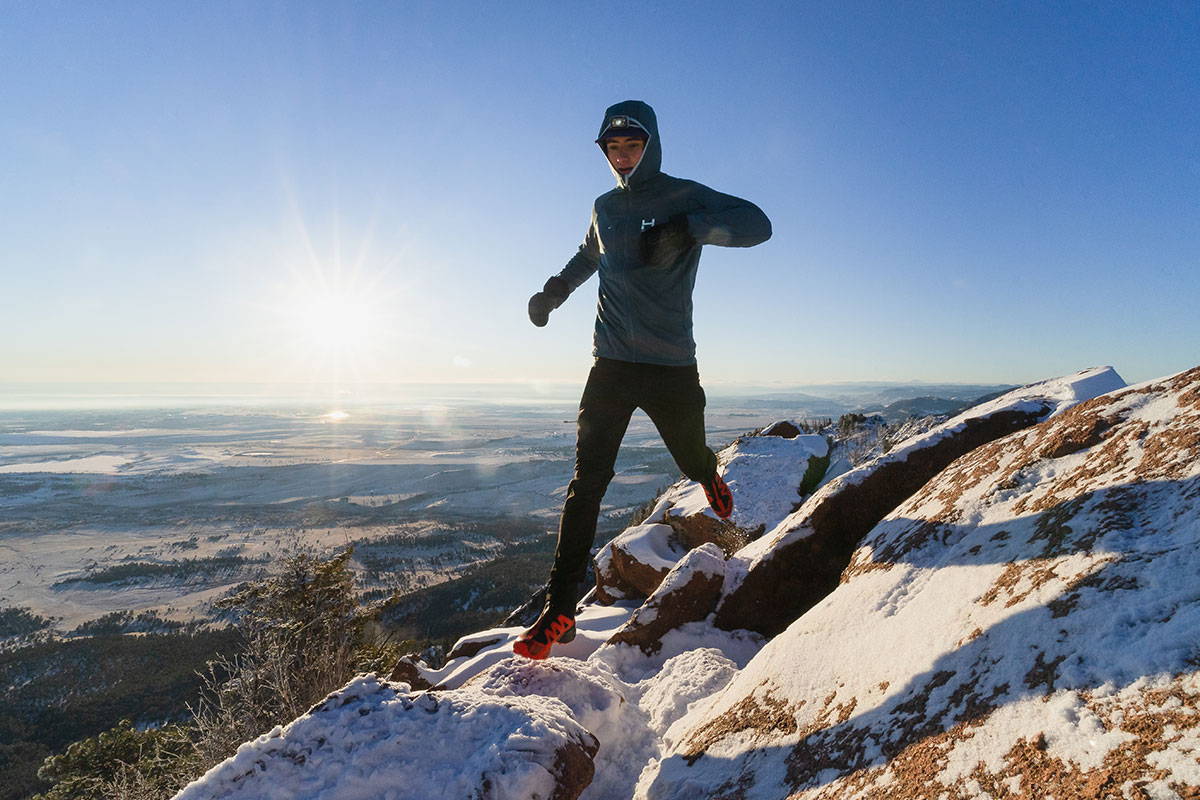Trail Running Layering Guide
Based on Temperature

May 15, 2023
Layering while trail running is a delicate balance that can take a little trial & error to get it dialed in perfectly. In the winter, you want to stay cool enough to perform well while not getting too cold and start to stiffen up. You also want to avoid getting too warm, because working up a heavy sweat while in cold conditions leads to a bone-chilling cold if you need to slow down the pace. What is the key? Dress in lightweight, highly breathable layers that you can take on or off to match the temperature & the effort level.
Here is a general guide to layering for trail running based on the temperature:
Warm Weather (70-90°F / 21-32°C):
- Base layer: Lightweight, moisture-wicking tank top, short-sleeve shirt, or sun hoodie.
- Outer layer: Shorts and a lightweight sun hat to protect your face and neck.
Mild Weather (50-70°F / 10-21°C):
- Base layer: Lightweight, moisture-wicking top.
- Outer layer: Shorts or lightweight pants.
Cool Weather (30-50°F / -1-10°C):
- Base layer: Lightweight, moisture-wicking long-sleeve shirt or a short-sleeve shirt with a lightweight long-sleeve shirt over it.
- Mid-layer: Lightweight jacket or vest. We will often take this off for big climbs in the full sun, and put it back on for the downhill or windy sections.
- Outer layer: Hiking or running pants, light gloves or arm sleeves.
Cold Weather (below 30°F / -1°C):
- Base layer: Thermal long-sleeve shirt and thermal leggings.
- Mid-layer: Light jacket.
- Outer layer: Running pants or tights, insulated gloves or mittens, and a warm hat or beanie.
Bonus Tip: If you are planning on running in the alpine (above treeline) - always bring a lightweight water & windproof layer to keep you warm in the wind & protect you against any surprise storms.
Remember to always check the weather forecast before heading out on a trail run and adjust your layers accordingly. It's important to stay warm and dry to prevent hypothermia, but you also don't want to overheat and risk dehydration. Bring extra layers and gear with you, especially if you're running in mountainous terrain where the weather can be unpredictable. Make sure to also bring plenty of water and snacks to keep you fueled and hydrated throughout your run.

